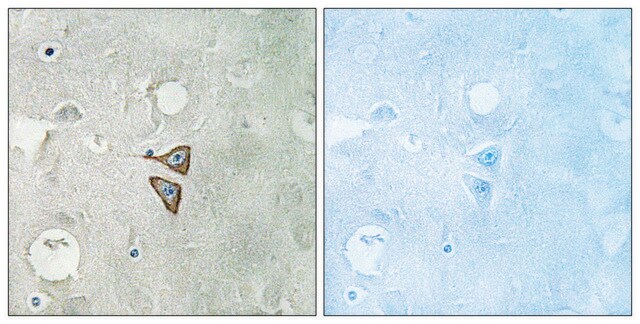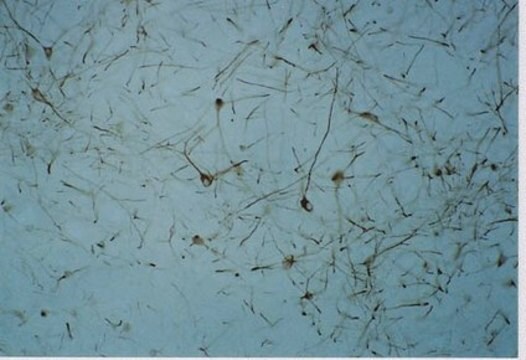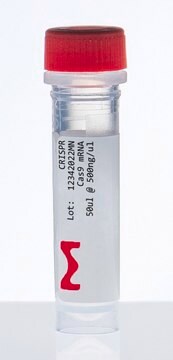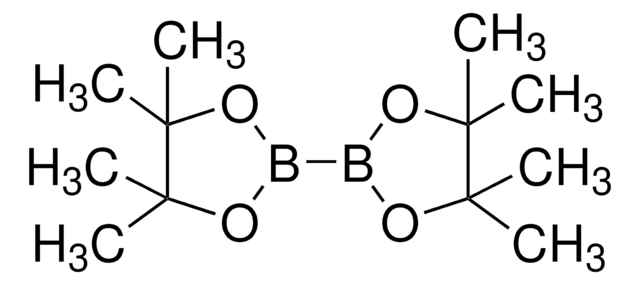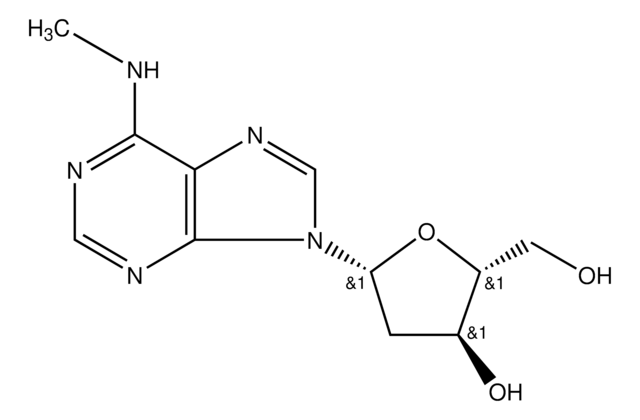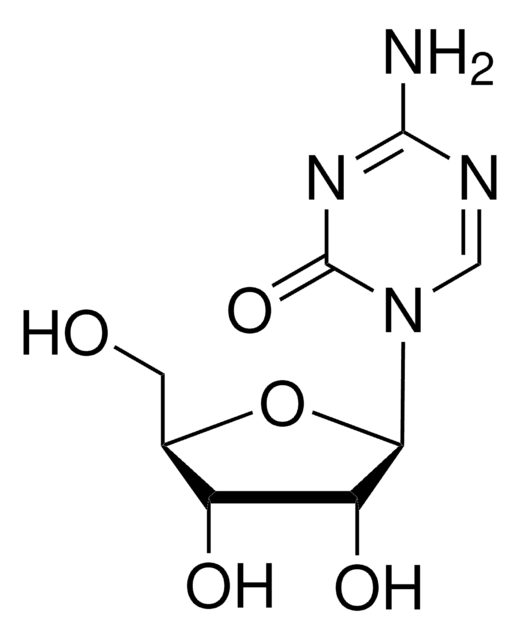推薦產品
生物源
rabbit
品質等級
共軛
unconjugated
抗體表格
whole antiserum
抗體產品種類
primary antibodies
無性繁殖
polyclonal
形狀
lyophilized powder
分子量
antigen ~55 kDa
物種活性
mouse (predicted), rat
技術
immunocytochemistry: 1:800 using PLP fixed rat brain sections
western blot: 1:800 using whole brain homogenate
UniProt登錄號
運輸包裝
wet ice
儲存溫度
−20°C
基因資訊
mouse ... Oprd1(18386)
rat ... Oprd1(24613)
一般說明
Opioid peptides are endogenous neuromodulators that play a major role in nociception by interacting with several membrane receptors. Molecular cloning techniques have characterized the nucleotide sequence of several distinct opioid receptors, including the δ-, κ- and μ-opioid receptors.1 The cloned receptors are highly homologous (65%), differing only at the N- and C-termini and at the extracelluar loops that confer binding specificity. All three receptors interact with heterotrimeric G proteins.
δ-Opioid receptors (DOR) are located postsynaptically on pallidostriatal feedback neurons. DORs also modulate nociception presynaptically in the periaqueductal gray where immunolabeling of DOR has been shown to be intracellular and often associated with large dense-core vesicles. Additionally, receptor autoradiographic investigations have localized DORs to the external plexiform layer of the olfactory bulb, the nucleus accumbens, several layers of the cerebral cortex and several nuclei of the amygdala.
References
1. Goldstein, A. Trends Pharmacol. Sci., 8, 456-459 (1987).
δ-Opioid receptors (DOR) are located postsynaptically on pallidostriatal feedback neurons. DORs also modulate nociception presynaptically in the periaqueductal gray where immunolabeling of DOR has been shown to be intracellular and often associated with large dense-core vesicles. Additionally, receptor autoradiographic investigations have localized DORs to the external plexiform layer of the olfactory bulb, the nucleus accumbens, several layers of the cerebral cortex and several nuclei of the amygdala.
References
1. Goldstein, A. Trends Pharmacol. Sci., 8, 456-459 (1987).
特異性
The antiserum is specific for the COOH terminal of the opioid δ receptor.
免疫原
Peptide corresponding to the carboxy-terminal of the opioid δ receptor covalently attached onto a carrier protein.
免責聲明
Unless otherwise stated in our catalog or other company documentation accompanying the product(s), our products are intended for research use only and are not to be used for any other purpose, which includes but is not limited to, unauthorized commercial uses, in vitro diagnostic uses, ex vivo or in vivo therapeutic uses or any type of consumption or application to humans or animals.
未找到適合的產品?
試用我們的產品選擇工具.
儲存類別代碼
11 - Combustible Solids
水污染物質分類(WGK)
WGK 3
閃點(°F)
Not applicable
閃點(°C)
Not applicable
個人防護裝備
Eyeshields, Gloves, type N95 (US)
分析證明 (COA)
輸入產品批次/批號來搜索 分析證明 (COA)。在產品’s標籤上找到批次和批號,寫有 ‘Lot’或‘Batch’.。
S R Childers
Life sciences, 48(21), 1991-2003 (1991-01-01)
Although pharmacological data provide strong evidence for different types of opioid receptors (e.g., mu, delta, and kappa), they share many common properties in their ability to couple to second messenger systems. All opioid receptor types are coupled to G-proteins, since
M F Olive et al.
The Journal of neuroscience : the official journal of the Society for Neuroscience, 17(19), 7471-7479 (1997-09-20)
Parallel studies have demonstrated that enkephalin release from nerve terminals in the pallidum (globus pallidus and ventral pallidum) can be modulated by locally applied opioid drugs. To investigate further the mechanisms underlying these opioid effects, the present study examined the
The delta-opioid receptor: molecular pharmacology, signal transduction, and the determination of drug efficacy.
R M Quock et al.
Pharmacological reviews, 51(3), 503-532 (1999-09-02)
P A Zaki et al.
Annual review of pharmacology and toxicology, 36, 379-401 (1996-01-01)
Since the discovery of opioid receptors over two decades ago, an increasing body of work has emerged supporting the concept of multiple opioid receptors. Molecular cloning has identified three opioid receptor types--mu, delta, and kappa--confirming pharmacological studies that previously postulated
B L Kieffer
Cellular and molecular neurobiology, 15(6), 615-635 (1995-12-01)
1. Opioid peptides are a family of structurally related neuromodulators which play a major role in the control of nociceptive pathways. These peptides act through membrane receptors of the nervous system, defined as mu, delta and kappa and endowed with
我們的科學家團隊在所有研究領域都有豐富的經驗,包括生命科學、材料科學、化學合成、色譜、分析等.
聯絡技術服務